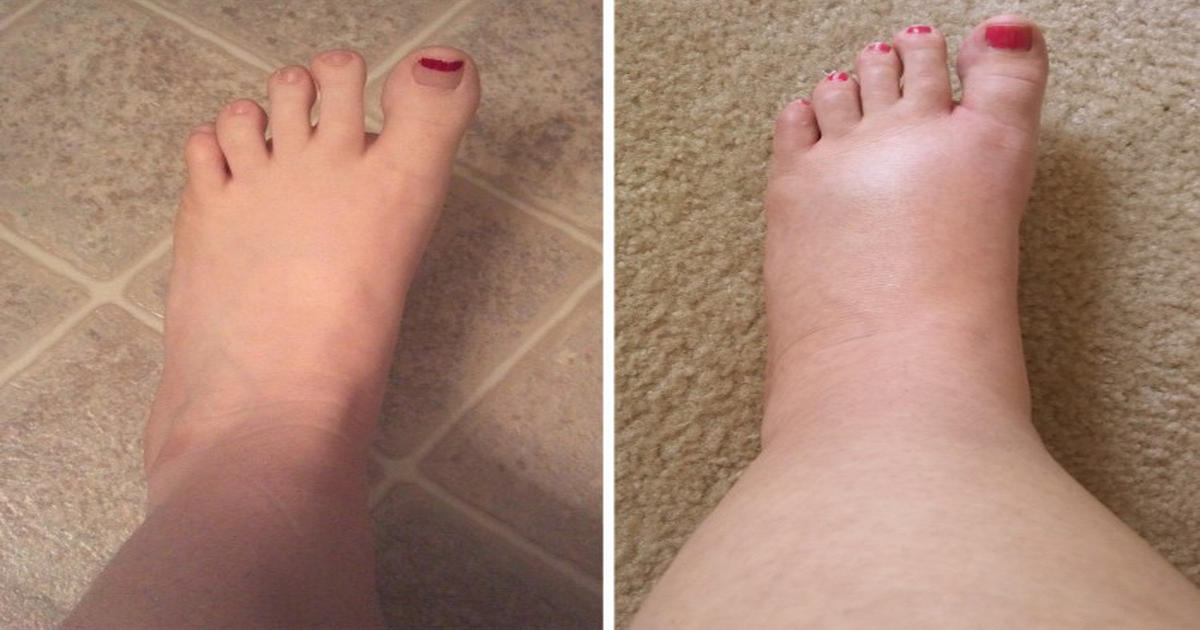
Are you tired of dealing with pitting edema, swollen legs, and a round face that hints at underlying blood sugar issues? These symptoms can be frustrating and often linked to various health problems such as liver, kidney, or heart issues. You might even be worried that you’re consuming too much sodium. These concerns can be overwhelming and confusing.
I can understand the anxiety of not knowing the root cause of your edema, and the fear of relying on medications like blood thinners or diuretics that come with unwanted side effects. You might feel trapped, unsure of how to effectively address the problem and worried about the long-term impact on your health.
But what if I told you there’s a simple, effective way to tackle pitting edema without resorting to harsh medications? I’ve been in your shoes, and I’ve found a solution that can help you resolve these issues quickly and easily. By applying the method I’m going to share with you, you can address the root cause of your edema, improve your health, and say goodbye to swollen legs and blood sugar worries.
Understanding Edema
Now, swollen legs are called edema. If you look this up, it’ll say that it’s a liver problem, a kidney problem, or a heart problem. Maybe you’re consuming too much sodium, but that’s not always the case. There’s something else way more common, and I’m going to share that with you today. This is totally easy to fix. When you apply what I’m going to show you, you will fix this very fast without taking a blood thinner or some type of diuretic to push the fluid out. I mean, those come with side effects.
When you have fluid retention, especially in your lower legs and ankles, this boils down to a problem with these little tiny pumps that are not working in your cells. You have millions and millions of these little tiny pumps that push fluid in and out of the cell. The specific pump that’s not working in this case is called the sodium-potassium pump.
The Sodium-Potassium Pump
There are some really interesting things about this pump. It uses like 30 to 40% of all the energy that is given to that cell. But if that pump goes bad, like in our house when the pump went bad, we had about a foot of water in our basement. If the pump goes bad in your body, you’re going to have a lot of fluid that is not going to be in the cells; it’s going to be outside the cells, and that’s called interstitial fluid retention.
Glycation and Blood Sugar
What’s really going on in your lower ankles is you’re getting a condition where your sugar in the blood is too high. All that sugar is connected to the protein in the blood called hemoglobin. What happens when this sugar connects to the protein in your blood is called glycation. This is a term used when you hear of the A1C test, which measures how much sugar is stuck to your blood protein and gives you an average over about three months, as red blood cells survive about three months.
When this sugar gets stuck to the blood protein, it doesn’t come off; it’s stuck there permanently until that blood cell dies. So, when you eat more sugar, you get more sugar stuck to this protein until this protein can’t work anymore. The name for this is that the protein is glycated. The main takeaway is that when you eat sugar, you destroy the ability for the blood cell to carry nutrition to the body and oxygen. This glycated protein molecule now plugs up your circulation, leading to a lack of blood flow and pooling in the lower parts of your body, causing swelling.
The Role of Sodium and Potassium
This also destroys the inside of your arteries and creates a leakiness outside the cell. The fluid that was supposed to be inside your vessels can now escape. Another thing that happens when you eat a lot of sugar is that it creates sodium retention. Not to mention, the other mineral called potassium gets locked up in the sugar. Wherever the sodium goes, the water goes. Over time, this will affect the nerves in the bottom of the feet, leading to numbness and tingling, known as peripheral neuropathy.
So yes, when you look at a diabetic, you see a lot of fluid in the ankles, but even people who are not diabetic or pre-diabetic but are heading in that direction also have fluid retention.
Essential Nutrients to Correct Edema
There is a very important vitamin to correct this, but there are two other minerals you need to get from your diet. The obvious one is potassium. The problem with potassium is that it’s not easy to get from the diet because we need so much. An average person needs 4700 milligrams. Think about what that means: if you were to eat one banana, that’s like 300 milligrams. So how many times does 300 go into 4700? You’d have to consume 15.6 bananas every day just to get your potassium, but that’s hard and a lot of sugar.
Instead, you might be better off eating avocados, more salads, and even more fruits like berries. You can get a lot of potassium from these sources. The other mineral, magnesium, is behind something called ATP, which is the energy currency of the body. Yes, you’ll get cramps if you have magnesium problems, but you’ll also have a lack of energy.
Sources of Magnesium
To get magnesium, you probably need to consume more pumpkin seeds or sunflower seeds, as well as leafy greens. You don’t need 4700 milligrams like potassium; you need about 420 milligrams of magnesium. You can also get both of these from a good electrolyte powder, but make sure the electrolyte powder is high quality and doesn’t have hidden sugars.
The Importance of Vitamin B1
So, that will fix the pump, but the very reason why the pump went bad is what we want to talk about next: a deficiency of vitamin B1. When you eat sugar in the body, it has to be broken down into a smaller sugar molecule called glucose. Then it has to enter the mitochondria to be turned into energy. In order for it to go from this step to this step, this one little enzyme, transketolase, requires vitamin B1. If you don’t have enough, you will not be able to use that as energy.
The number one cause of a B1 deficiency is consuming too many carbohydrates in the refined form. For example, if you eat all this refined sugar without B1, the body has to pull from its reserves—from different tissues, organs, and glands. Eventually, you’ll be deficient. B1 is also very important as an antioxidant to protect the nerves. This is why, when you run out of B1, you get peripheral neuropathy, which is tingling, numbness, and burning on the bottom of your feet.
The point is that B1 is so important in carbohydrate metabolism and protecting you against a lot of carbohydrates. When I say protection, I’m talking about protection against glycation—this sugar connecting to the protein. B1 keeps these apart so you don’t destroy your blood cells and you have good circulation. As soon as that sugar connects to the protein, it’s permanent; it’s not coming off.
Conclusion
Magnesium, potassium, and B1 are the solutions to swollen ankles. But you also have to get the sugar out of your diet because as soon as you go back to eating refined carbohydrates, the swelling comes back.




